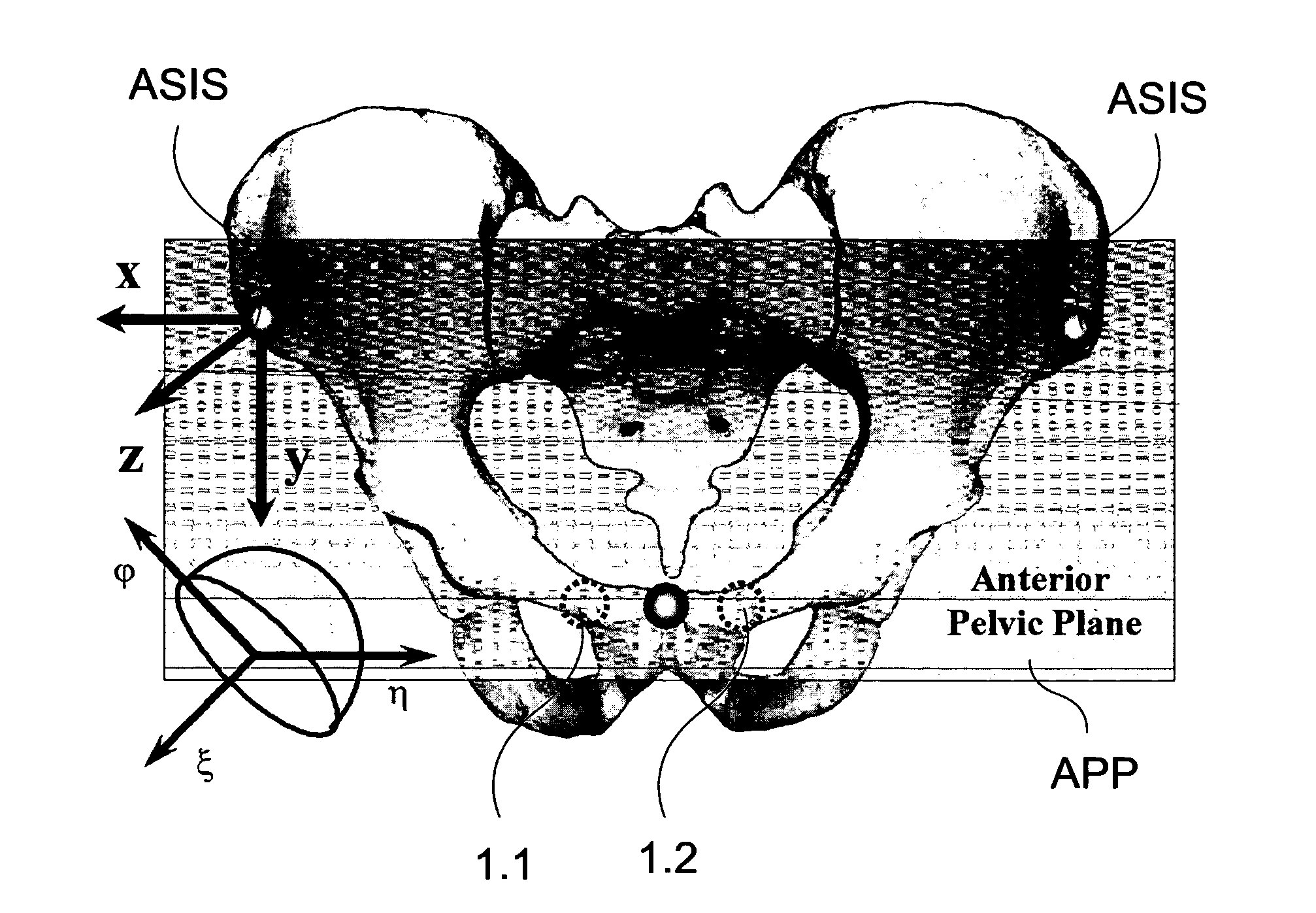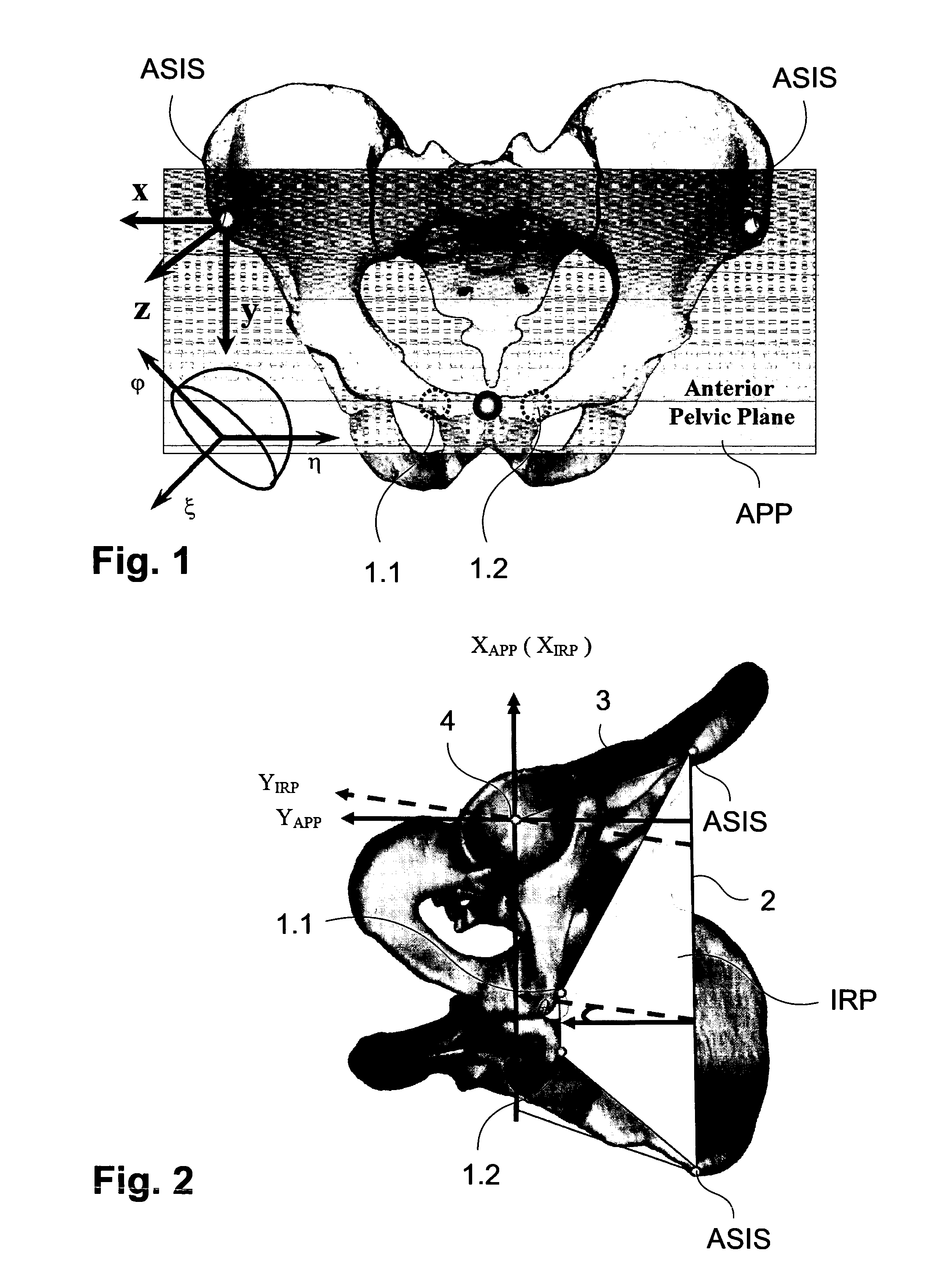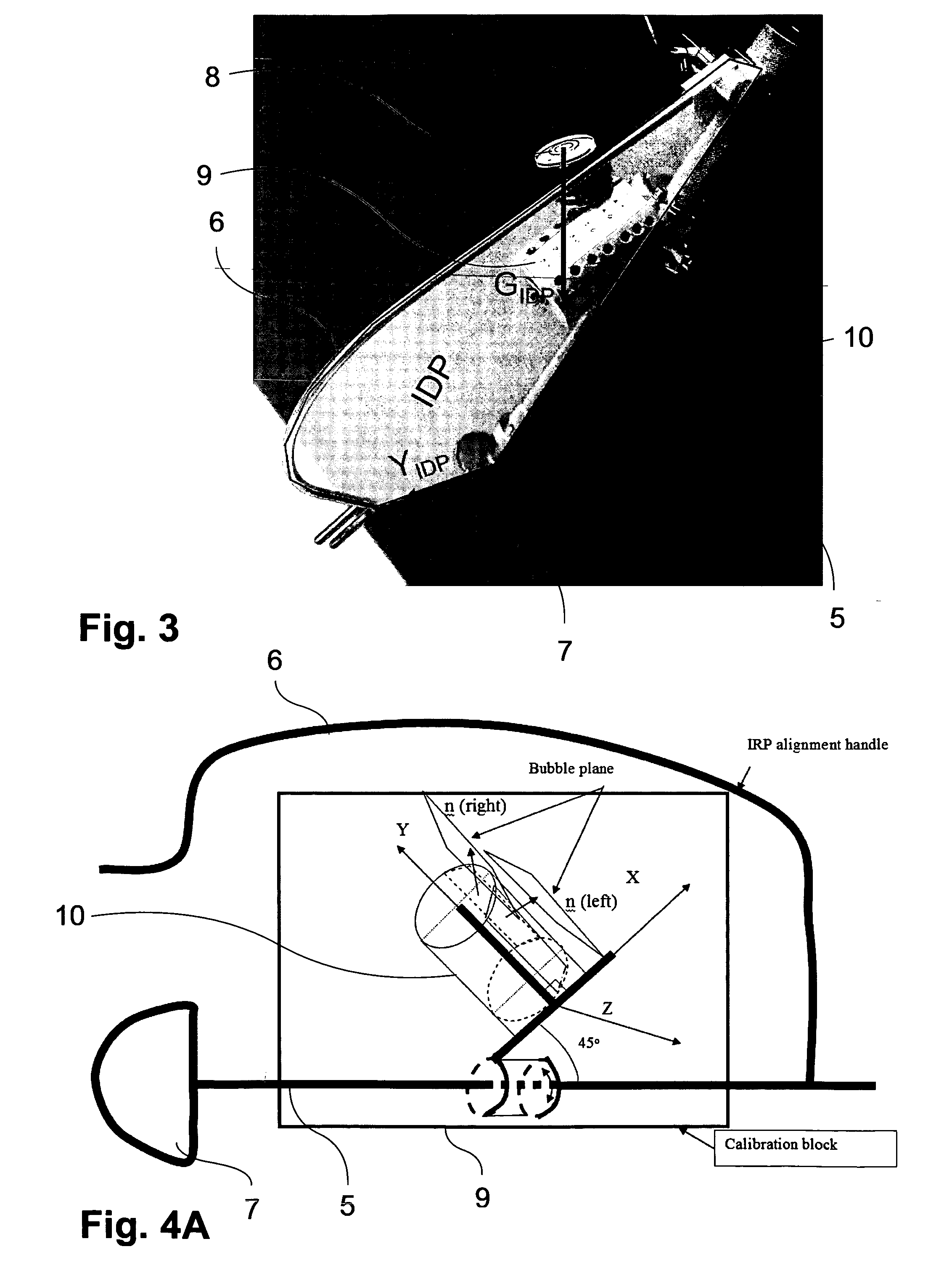Methods and devices for patient-specific acetabular component alignment in total hip arthroplasty
a technology of acetabular components and alignment devices, which is applied in the field of acetabular component alignment devices for total hip arthroplasty, can solve the problems of increased morbidity for patients and healthcare system, increased risk of dislocation, and inconvenient use of intra-operative mechanical guides, and achieves optimal cup positioning, high precision, and the effect of low cos
- Summary
- Abstract
- Description
- Claims
- Application Information
AI Technical Summary
Benefits of technology
Problems solved by technology
Method used
Image
Examples
Embodiment Construction
[0053]Throughout the text, we always establish a local coordinate system of a rigid body from a local reference plane defined on the rigid body. Thus, without explicitly stating, we always name the local coordinate system after the local reference plane. Furthermore, a vector V that is defined in a local coordinate system X will be noted as VX. But if we would like to know the axis v of a local coordinate system X in another local coordinate system Y, we will note it as vXY. A rigid body transformation from a local coordinate system X to another local coordinate system Y will be noted as TXY. The inverse of this transformation will be recorded as TYX. As in most of the time, we are only interested in knowing the orientation of a vector in a local coordinate system, knowing rotational part RXY of the rigid body transformation TXY is enough for our purpose. For a better explanation, here is a list of the names of the coordinate systems and the vectors:[0054]APP: Anterior Pelvic Plane[...
PUM
 Login to View More
Login to View More Abstract
Description
Claims
Application Information
 Login to View More
Login to View More - R&D
- Intellectual Property
- Life Sciences
- Materials
- Tech Scout
- Unparalleled Data Quality
- Higher Quality Content
- 60% Fewer Hallucinations
Browse by: Latest US Patents, China's latest patents, Technical Efficacy Thesaurus, Application Domain, Technology Topic, Popular Technical Reports.
© 2025 PatSnap. All rights reserved.Legal|Privacy policy|Modern Slavery Act Transparency Statement|Sitemap|About US| Contact US: help@patsnap.com



